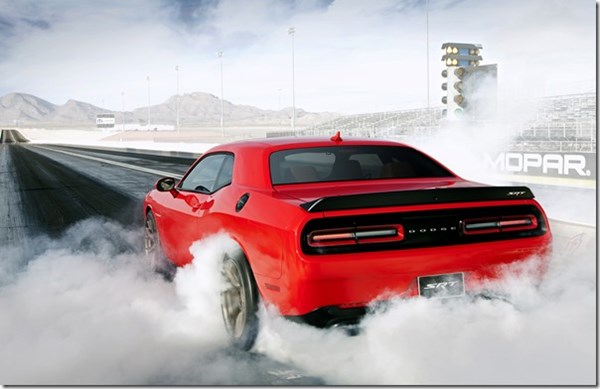How to Make a Hellcat
Russ Ruedisueli is vehicle line executive and Head of Engineering at SRT.
#interior #electronics
Russ Ruedisueli is vehicle line executive and Head of Engineering at SRT. Which means that Ruedisueli and his team create cars that go fast. Really fast. They engineer cars where everything is functional toward that end. They engineer cars that are stylish enough for show, but they are most certainly about go.

Like the 2015 Dodge Challenger SRT Hellcat. As Ruedisueli points out in this edition of “Autoline After Hours,” the speed of an SRT product is not electronically limited. And the Hellcat—which was the internal code name for the 6.2-liter HEMI engine that has become the moniker for this version of the SRT Challenger—has/is a 707-hp supercharged engine. If mated to a Torqueflite 8H90 transmission, the curb weight of the car is 4,439 lb. If mated to a six-speed manual Tremec TR-6060, the curb weight is 4,449 lb.
So think about that: 707 hp. 4,449 lb. Pretty quick.

Ruedisueli talks about the engine that is the highest horsepower mill that Chrysler has ever produced. About the forged-steel crankshaft with induction-hardened bearing surfaces, a crank that can withstand firing pressures of 110 bar. About the high-strength forged-alloy pistons. The heat-treated aluminum-alloy cylinder heads. Cast-iron block. About the supercharger that can handle up to 30,000 liters of air per minute.
About the exterior design that includes such things as the “Air Catcher” inlet port, which is located at the driver’s side parking lamp and feeds air right into the engine air box. About the hood with dual air extractors.
The Hellcat is at the top of the horsepower ratings among the offerings of the Detroit Three by some non-trivial measure. Ruedisueli admits that when they were thinking about developing the engine, they assessed what the other guys were doing, estimated where the other guys were going, and, in effect, decided to go big with the Hellcat.
It is an interesting story that Ruedisueli tells that’s of interest to engineers and auto enthusiasts alike. And especially to those who happen to be both.
In addition to which, John McElroy, Chris Paukert of Autoblog.com and I discuss a variety of subjects including the “firing” of Ferrari chairman Luca di Montezemolo, the passing of auto industry icon Jim Harbour, the characteristics of the forthcoming fourth-generation Mazda MX-5 (a.k.a., Miata), and a whole lot more.
And you can see it here:
RELATED CONTENT
-
About the 2019 Toyota RAV4
Last year Buick sold 219,231 vehicles in the U.S.
-
Engineering the 2019 Jeep Cherokee
The Jeep Cherokee, which was launched in its current manifestation as a model year 2014 vehicle, and which has just undergone a major refresh for MY 2019, is nothing if not a solid success.
-
2019 Chevrolet Blazer Premier AWD
The 2019 Chevy Blazer is the most-complete Chevy I’ve ever driven, as in seemingly every detail of the crossover having been carefully considered and appropriately executed, from the front end that has a design the likes of which is absolutely rare in a category of vehicles that is getting more undifferentiated by the moment to even consideration given to the piping on the IP.


.jpg;width=70;height=70;mode=crop)